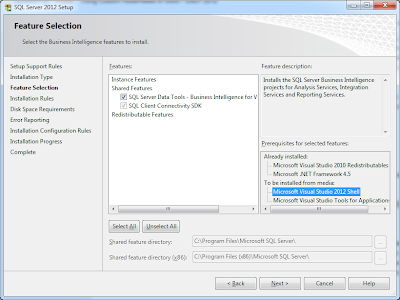Moq'ing Successive Calls to a Method
I just ran into a little problem when using Moq - I wanted to be able to mock up the result of a method call, but return a different result each time the mocked method was called (I'm pulling messages out of an MSMQ within a loop). Anyone who's used Moq will know that you usually mock results with the Setup() method - however, Moq has no built in way of achieving this (that I'm aware of). To cut a long explanation short, I found a series of articles on Phil Haack's blog addressing (almost) the same issue. Phil's second post adds exception handling to his original example, but I wanted to return a "null", rather than throw an exception. Here's the code from Phil's blog, slightly rehashed to deal with nulls: public static class MoqExtensions { public static IReturnsResult<T> ReturnsInOrder<T, TResult>( this ISetup<T, TResult> setup, params object [] results) where T: class { var que...

